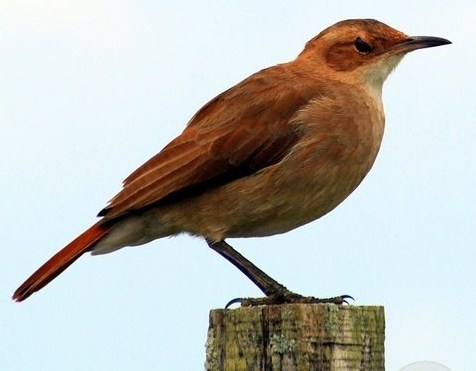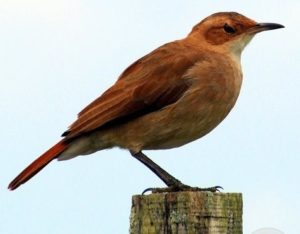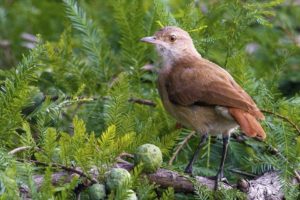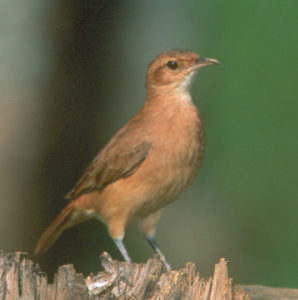The Rufous Hornero is a national symbol of Argentina. The Rufous Hornero are members of the genus Furnarius family Furnariidae, native to South America.
Rufous Hornero are brown birds with rather short tails and rather long bills. They are known for building mud nests that look like old wood ovens. While many Rufous Hornero have different nests.
The size and exact form of the nest vary depending on the species. They generally lay two to four eggs, although the breeding behavior is almost unknown.
Adults Rufous Hornero can often be seen sitting on top of their nest. Disregarding the uncommon and relatively shy, Rufous Hornero is typically relatively common and very conspicuous birds. They are generally noisy. All Rufous Hornero are partially terrestrial and often seen walking on the ground with a relatively upright posture.

Do you know Andean Condor is national bird of Bolivia
[table caption=”Rufous Hornero Features” width=”500″]
No.,Features,Measures,
1,National Bird,Argentina
2,Rank,Furnariidae
3,Wingspan,10-15 cms
4,Phylum,Chordate
5,Mass Male,20-30 g.
6,Mass Female, 20-25 g.
7,Body Length,around 4 Inches
[/table]
Interesting Facts of National Bird of Argentina
Nest:-
The couple builds the nest. His final average weight 5 kg and acquires considerable hardness once dry. It has rounded external shape with a rounded opening to the right, which provides access to a corridor, separated by an internal wall or bed “room” in which the eggs are incubated.
Each nest is used only once, so another was built the following year. Old one is free for anyone who wants to use it, other birds or man for decoration, which often happens.
Singing
The peculiarities of the couple sing a duet.
Reproduction
The couple will be together forever. In the spring, the nest chamber is hosting an average of four eggs; incubate both parents alternatively for 15 days. When you come back, you can advertise your song to the other end. Because of its size and diet are often exposed to parasitism by Shiny Cowbird, and you can see them raise chicks of this species.
Behavior
Like the pigeons that live in cities have a gentle nature that they can be seen in the distance from people. It is a migratory bird.
Taxonomy
Recognizing that the subspecies deserve to be elevated to the rank of full species, the South American Classification Committee rejected Proposal No. 35 due to insufficient data. Both Clements Checklist 6.9 SACC and continue to regard the two taxi as subspecies of F. leucopus.
Rufous Hornero Picture














